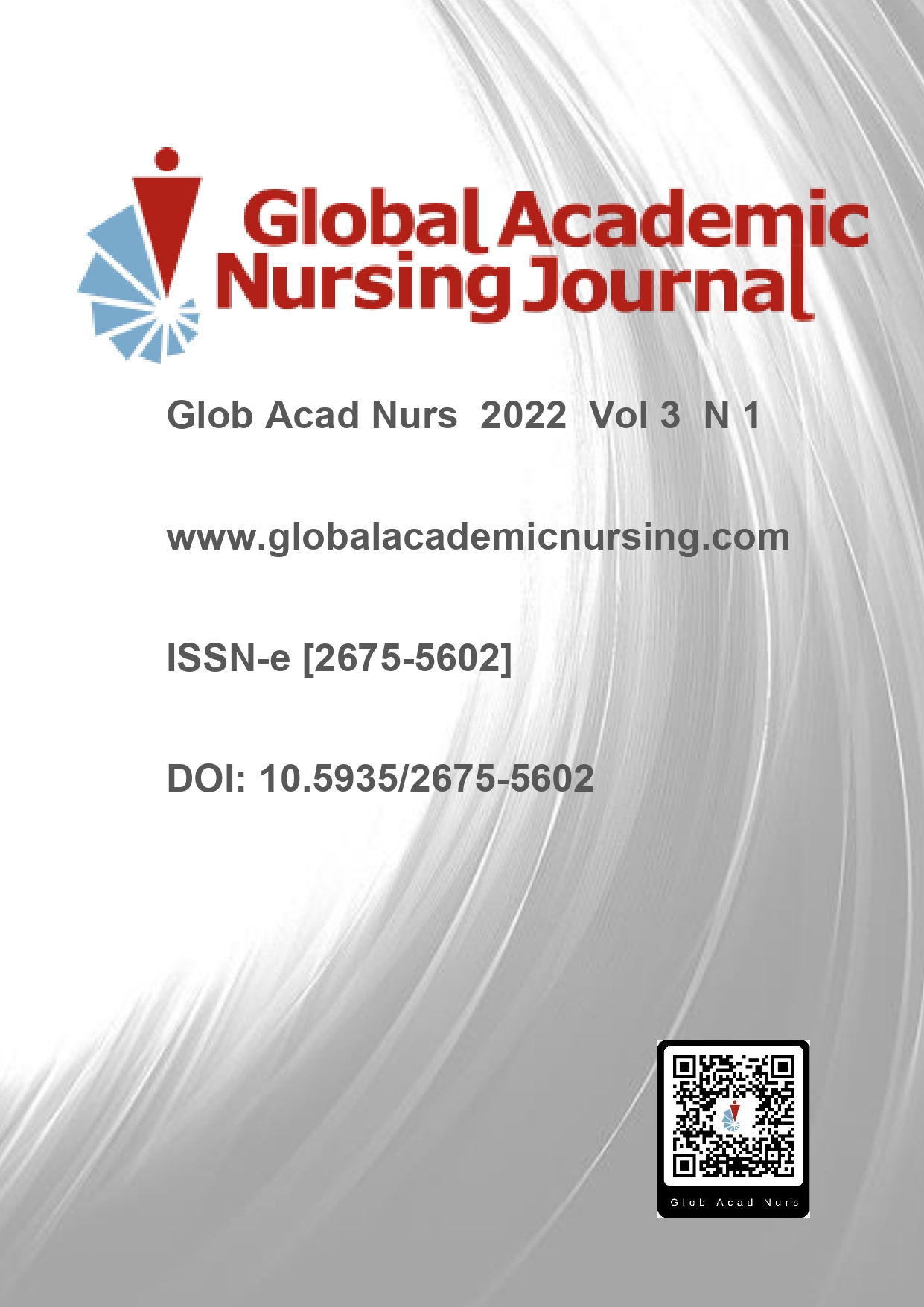Abstract
The aim was to reflect on the potential of applying the continuous quality improvement model, disseminated by the Institute for Healthcare Improvement (IHI) in health services. This is a reflective study on the application of the continuous quality improvement model in national and international research. The purpose of the model is to improve healthcare outcomes and the patient experience through changes in the behavior of healthcare professionals and institutions and by systematically applying changes to complex processes and systems. Furthermore, the model consists of three fundamental questions that are combined with the PDSA cycle (Plan-Do-Study-Act). The impacts of these cycles on care processes and patient safety were also presented. Studies that used this methodology showed a reduction in adverse events and improvement in care processes in health services. Thus, the continuous quality improvement model should be widely used in clinical practice and research to improve care provided to all patients and at all levels of health care with limited resources and without great costs.
References
World Health Organization (WHO). Patient Safety, editors. Global action on patient safety: report by the Director-General [Internet]. Genebra (GE): WHO; 2018 [acesso em 19 setembro 2020]. Disponível em: https://apps.who.int/iris/handle/10665/327526
Kapur N, Parand A, Soukup T, Reader T, Sevdalis N. Aviation and healthcare: a comparative review with implications for patient safety. JRSM Open. 2016;7(1). DOI: 10.1177/2054270415616548
Berwick D, Snair M, Nishtar S. Crossing the Global Health Care Quality Chasm: A Key Component of Universal Health Coverage. JAMA. 2018;320(13):1317–18. DOI: 10.1001/jama.2018.13696
Berwick DM, Nishtar S, Aertes A, Ali MK, Carayon P, Chinbuah MA, et al. Crossing the global quality chasm: Improving health care worldwide. Washington: The National Academies Press. 2018. DOI: 10.17226/25152
Organização Mundial da Saúde (OMS). Guia curricular de segurança do paciente da Organização Mundial da Saúde [Internet]. Rio de Janeiro (RJ): OMS; 2016 [acesso em 19 setembro 2020]. Disponível em: https://apps.who.int/iris/bitstream/handle/10665/44641/9788555268502-por.pdf?sequence=32&isAllowed=y
Institute for Healthcare Improvement (IHI). Boston: How to Improve. 2018. Institute for Healthcare Improvement [Internet]. Massachusetts (MA): IHI; 2018 [acesso em 19 setembro 2020]. Disponível em: http://www.ihi.org/resources/Pages/HowtoImprove/ScienceofImprovementHowtoImprove.aspx
Dent EM. Improving Patient Safety: Reducing Medication Errors in the Microsystem [Monografia]. Master’s Projects and Capstones. California: University of San Francisco [Internet]. California; 2015 [acesso em 4 fevereiro 2021]. Disponível em: http://repository.usfca.edu/cgi/viewcontent.cgi?article=1115&context=capstone
Phippen A, Pickard J, Steinke D, Cole M, Roberts D. Identifying, highlighting and reducing polypharmacy in a UK hospice inpatient unit using improvement Science methods. BMJ Open Quality. 2017;6(1). DOI: 10.1136/bmjquality.u211783.w5035
Breeding J, Welch S, Whittam S, Mathews N, Wong KS, Wong A. Medication Error Minimization Scheme (MEMS) in an adult tertiary intensive care unit. Australian Critical Care, Melbourne. 2013;26(2):58-75. DOI: 10.1016/j.aucc.2012.07.003
Øvretveit J. Does improving quality save money? A review of the evidence of which improvements to quality reduce costs to health service providers. Health Foundation [Internet]. 2009 [acesso em 10 janeiro 2020]. Disponível em: https://www.health.org.uk/publications/does-improving-quality-save-money
Agência Nacional de Vigilância Sanitária (ANVISA). Assistência Segura: Uma reflexão teórica aplicada à prática [Internet]. Brasília (DF): ANVISA; 2013 [acesso em 10 janeiro 2020] Disponível em: https://www.portaldaenfermagem.com.br/downloads/Livro1-Assistencia_Segura.pdf
Institute for Healthcare Improvement (IHI). The Improvement Guide: A Practical Approach to Enhancing Organizational Performance [Internet]. Massachusetts (MA): IHI; 2009 [acesso em 10 janeiro 2020]. Disponível em: http://www.ihi.org/resources/Pages/Publications/ImprovementGuidePracticalApproachEnhancingOrganizationalPerformance.aspx
Lyder CH, Grady J, Mathur D, Petrillo MK, Meehan TP. Preventing pressure ulcers in Connecticut hospitals by using the plan-do-study-act model of quality improvement. Jt Comm J Qual Saf. 2004;30(4):205-14. DOI: 10.1016/S1549-3741(04)30022-5
Nates LKC, Neto AC, Pereira AJ, Silva E. Quality improvement model (IHI) as a strategy to implement a sepsis protocol in a public hospital in Brazil. BMJ Open Qual. 2020;9:e000354. DOI: 10.1136/bmjoq-2018-000354
Negrini R, Ferreira RDDS, Albino RS, Daltro CAT. Reducing caesarean rates in a public maternity hospital by implementing a plan of action: a quality improvement report. BMJ Open Qual. 2020;9:e000791. DOI: 10.1136/bmjoq-2019-000791
Costa LFRM. Redução de não conformidades no preparo e na administração de medicamentos orais via sonda nasogástrica / nasoentérica: impacto de um programa de melhoria da qualidade [Dissertação]. Mestrado da Escola de Enfermagem de Ribeirão Preto da Universidade de São Paulo. 2020;132f. DOI: 10.11606/D.22.2020.tde-18092020-105547
Reed JE, Card AJ. The problem with Plan-Do-Study-Act cycles. BMJ Qual Saf. 2016;25(3):147-52. DOI: 10.1136/bmjqs-2015-005094
Almeida MC, Portela MC, Paiva EP, Guimarães RR, Neto WCP, Cardoso PR, et al. Implantação de um time de resposta rápida em um grande hospital filantrópico brasileiro: melhora na qualidade dos cuidados de emergência por meio dos cuidados de emergência por meio do ciclo Planejar-Fazer-Estudar-Agir. Rev. Bras. Ter. Intensiva. 2019;31(2). DOI: 10.5935/0103-507X.20190036
Pereira RA, de Souza FB, Rigobello MCG, et al. Quality improvement programme reduces errors in oral medication preparation and administration through feeding tubes. BMJ Open Quality. 2020;9:e000882. DOI: 10.1136/bmjoq-2019-000882
Nunes MBM, Teixeira TCA, Gabriel CS, Gimenes FRE. Impacto de ciclos Plan-Do-Study-Act na redução de erro relacionado à administração de vacina. Texto Contexto Enferm. 2021;30:e20200225. DOI: 10.1590/1980-265X-TCE-2020-0225
Lidar CH, Grady J, Mathur D, Petrillo MK, Meehan TP. Preventing pressure ulcers in Connecticut hospitals by using the plan-do-study-act model of quality improvement. Ji Comm J Qual Sá. 2004;30(4):205-14. DOI: 10.1016/S1549-3741(04)30022-5
Galhano AR, Araujo CS, Maciel RO. A participação do escolar hospitalizado no processo de terapia medicamentosa como barreira na prevenção de eventos adversos. Glob Acad Nurs. 2021;2(4):e199. DOI: 10.5935/2675-5602.20200199

This work is licensed under a Creative Commons Attribution-NonCommercial-NoDerivatives 4.0 International License.
Copyright (c) 2022 Global Academic Nursing Journal

